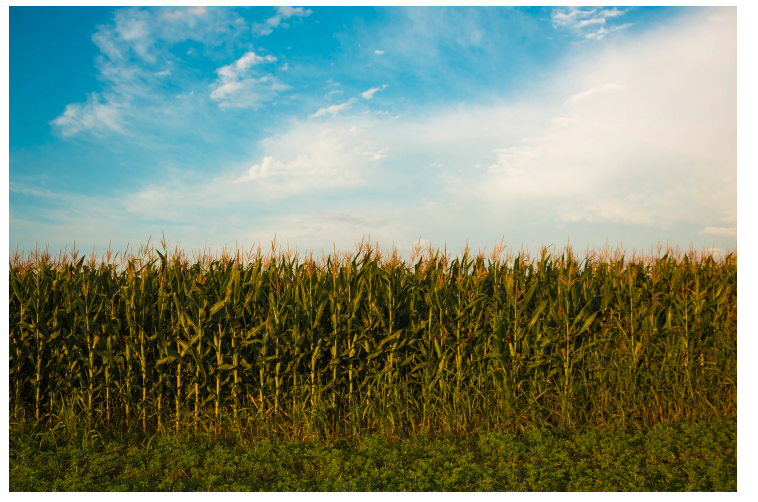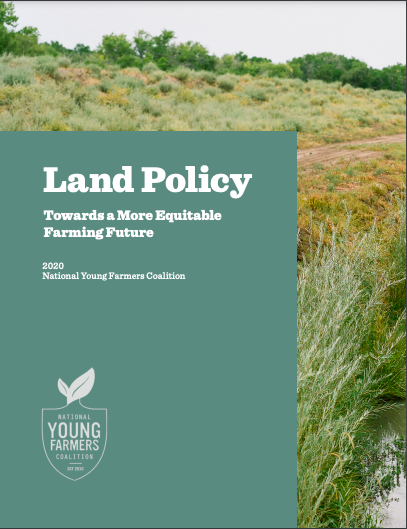The following was written in response to questions from Lisa Held for her new project, Peeled, on Substack.

Land access is consistently one of the biggest challenges young farmers face when getting started. What are the main reasons for that?
Finding secure access to high-quality farmland is more complex than just negotiating a sales contract or a lease—it encompasses a web of interlocking obstacles that vary depending on your vantage point. For example, farmers in arid parts of the U.S. must navigate complex management structures to secure necessary water resources. In urban areas, farmers grapple with zoning barriers and contaminated soil. Land-related challenges are compounded for Black, Indigenous, Latinx, farm workers, women, immigrants, and LGBTQ+ individuals. In particular, the intersection of land access challenges with structural racism makes these factors more acute for many BIPOC farmers.
The underlying reason for the challenge of accessing land to grow food is our system of property rights, which is based on an extractive relationship with land. The fact that land is a limited resource, alongside the impacts of generational wealth-building, further exacerbate the challenge.
Land as an entity that can be bought and sold is a settler-colonial construct. As we explain in our recent report, Land Policy: Towards a More Equitable Farming Future, this framework has been enforced through the United States’ political and legal systems, and it has been used to dispossess Indigenous people of billions of acres of land. Land is also tied with wealth extraction from every community of Black, Indigenous, and other people of color in America since Columbus. The result is deep inequity—98 percent of farmland in the U.S. is owned by white people and 95 percent of farmers are white.
This history is essential to understanding the land access challenges young farmers face today. When land is treated as a commodity there are a series of cascading impacts. For farmers, it means that in order to gain enough security to build a business growing food, they typically must own land. It also means that when a farm property is listed for sale, an aspiring farmer must compete with non-farming buyers whose incomes do not depend on what the land can produce and, as a result, are able to outcompete farmers. It also means that instead of collaborating to grow food, neighboring farmers must spend resources competing for land.
The second factor underpinning the challenge of land access is land loss. According to the American Farmland Trust, farmland is lost at a rate of 2,000 acres per day. The land that is paved over and turned into housing developments is disproportionately high-quality land around urban areas, precisely where young farmers want to grow. We have to ask ourselves how much longer this trend can continue. There is simply not enough land.
The third factor standing in the way of aspiring young growers is generational wealth-building and inter-family land transfer. In 2014, the USDA predicted nearly 91.5 million acres would change hands in the next five years, but only a relatively small percent was expected to be sold to non-relatives. With 75 percent of young farmers not coming from farm families, this represents a significant disadvantage. Land ownership has a cumulative effect on farm viability. When farmers own land, they can leverage that land to capitalize further land purchases, infrastructure investments, or other forms of saving that benefit future generations. The effects are clear: in our 2017 survey of young farmers across the country, the average farm size of respondents who came from farm families was 87.25 compared to 12 acres for those from non-farming backgrounds.
Public policy is at the heart of land use and many of the challenges that farmers face accessing land. Policy has shaped our food system and must be part of the bold, systemic change required to tackle its interconnected challenges. As millions of acres are predicted to change hands in the coming years, there is an opportunity to work towards land justice, rematriation, and more equitable models of land access that put land in the hands of young, diverse farmers.
Do we know if corporate ownership of farmland affects how much land is available to farmers?
If you look at the numbers, it wouldn’t seem so. A recent report from the USDA found that family farms, defined as operations where the majority of the business is owned by the individual responsible for day-to-day decisions on the farm, make up 98 percent of all farms and provide 88 percent of production, with “small family farms” (those with gross cash farm income below $350,000) operating nearly half of U.S. farmland.
This isn’t the whole picture, however. Non-farming corporate interest in farmland is growing and that is impacting the amount of available land and the price of land that farmers see. Strikingly, the USDA estimates 30 percent of farmland is owned by non-farmers. The USDA has also shared that 40 percent of farmland that is leased and nearly 45 percent of landlords have never farmed. As NPR reports, foreign ownership of farmland is on the rise as well, driven by investment opportunity. As investor interest in farmland grows, the consequences are significant for farmers, who cannot compete in terms of price or speed of purchase.
Ownership is not the only means of controlling and influencing farmland. The common metaphor for land rights is a bundle of sticks. This is used to explain how land is a commodity that has many different pieces that can be bought and sold. There is a long history of mineral rights, such as oil and gas, being sold from farmland, and water is following a similar trend in the Western states. This has devastating impacts for farmers, creating contamination hazards and stripping the land of critical resources for growing food. Contract farming, prevalent in the chicken and hog industries, is another form of indirect corporate influence on farmland through deep-seated control of the farm business.
States have recognized this as a growing issue and some have taken action. Minnesota, for example, has had an anti-corporate farmland ownership law in place since 1973. These laws are designed around the principle that corporations don’t live on the land, they don’t live in the community, they don’t employ local people or make decisions based on what’s best for their neighborhood.
Does corporate ownership of farmland affect the price/affordability of farmland? If so, how?
Yes, absolutely. The biggest challenge that farmers face in terms of farmland access is price. Affordability, defined as what a farmer can pay for land on a farming income, is directly tied to who else is competing for that land.
If corporations are allowed into the farm real estate marketplace, they inevitably impact the price of land because the amount of money they have available to offer is not tied to what they can grow on it. While production on the land may be a side benefit for these buyers, the financial model of farmland investment is tied to its resale value. For other corporate buyers, the value of the land is about the activities that they can conduct on it, such as building facilities or mining it for its mineral resources, rather than growing food.
Farmers have seen steadily rising real estate values that are out of sync with what it is possible to produce on the land. In 2016, the ratio of real estate value to production value was the lowest it has ever been with one dollar’s worth of farm real estate generating just $0.16 in production.
In 2019, we released our Finding Farmland Calculator, which is a tool that helps farmers compare land purchase opportunities and analyze the affordability of land based on their business plan. We hope that the calculator helps farmers navigate the process of accessing secure land, but it can also be used as an advocacy tool to help illustrate to policymakers how out of sync farmland prices are with what is possible to afford while growing food. We need policy intervention to address this growing disconnect.
Any other thoughts on Bill Gates owning vast amounts of farmland (and how that relates to Young Farmers’ work) that you’d like to share?
The fact that Bill Gates made headlines recently for becoming the largest private farmland owner in the U.S. is not surprising. The statistics around farmland ownership are staggering unequal. In addition to deep racial inequity, land is increasingly consolidated in the hands of a few individuals. Forty-one percent of farmland in the U.S. is operated by just over 7 percent of the farms. A lot of wealth is tied up in that land. The overall value of farm real estate in 2020 is forecast to be $2.58 trillion, accounting for over 80 percent of 2020 farm sector assets. Who owns this land and wealth is directly tied to who receives the benefits from it.
Bill Gates’ purchases illustrate the unmitigated crisis of inequity in access to land. If you simply look at the forces at place—increasing population, climate crisis, desertification, water scarcity, unpredictable weather, societal disruption—owning land is smart. When our government fails to provide for basic needs, we enter a race to the bottom to secure resources for ourselves. Bill Gates is an extreme example of that. And he is not the only pandemic– and climate-driven purchaser of farmland. Land, especially in rural areas in areas of the country that are more insulated from the volatility of the climate crisis, has become a refuge. This trend is likely to continue.
We need bold systemic change to address the land access issue and avoid a future where we have sacrificed meaningful and reciprocal relationship with the land for short-term profit. We must change policy to: eliminate inequities in land ownership and access; protect farmland for producers; facilitate appropriate, affordable, and secure land tenure; and support farm viability and transition. We must see land as a vital resource on which our collective future rests, rather than a commodity fueling economic growth. There is no time to wait.



